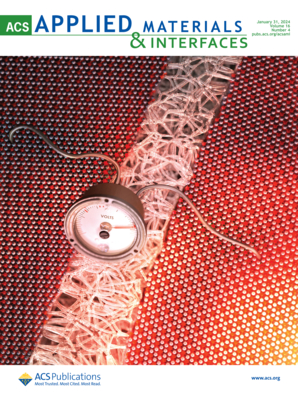Ion-Conducting and Stretchable Organogel Polymer Interface Layer for Stabilizing Lithium Metal Anodes via In Situ Polymerization Strategy
IF 8.3
2区 材料科学
Q1 MATERIALS SCIENCE, MULTIDISCIPLINARY
引用次数: 0
Abstract
The uncontrollable growth of lithium dendrites and the unstable interface of the lithium metal anode/electrolyte inhibit potential large-scale applications of lithium metal batteries. The polymer artificial solid–electrolyte interface layer shows potential for the homogeneity of ion flux toward a lithium metal electrode. Herein, we design an ionic conductive and stretchable organogel polymer layer as the artificial protective layer via in situ polymerization on an active lithium metal anode, which can accommodate volume changes and maintain enhanced interfacial contact with the electrode. The propylene carbonate and the long alkyl ether in the polymer protective layer contribute to the inducing of uniform Li deposition and enhance ion transport. In addition, the in situ polymerization membrane adheres tightly to the lithium metal anode, which can effectively eliminate the barriers of ionic transport at heterogeneous interfaces and has stretchable strength tending to suppress Li dendrites. As a result, the Li/Li symmetric cell with this artificial polymeric protect layer can stably cycle for over 800 h under 1 mA cm–2 without increased polarization voltage, while the corresponding lithium metal/LiFePO4 full battery delivers high-capacity retention of 102.6, 127.7, and 136.7% after 244, 862, and 976 cycles at 0.3, 1, and 2 C. Furthermore, the lithium metal battery equipped with this artificial layer also shows longer cycling life and higher reversible specific capacity (130.24 mAh g–1) under 1 C and enhanced rate performance than bare Li battery.

求助全文
约1分钟内获得全文
求助全文
来源期刊

ACS Applied Materials & Interfaces
工程技术-材料科学:综合
CiteScore
16.00
自引率
6.30%
发文量
4978
审稿时长
1.8 months
期刊介绍:
ACS Applied Materials & Interfaces is a leading interdisciplinary journal that brings together chemists, engineers, physicists, and biologists to explore the development and utilization of newly-discovered materials and interfacial processes for specific applications. Our journal has experienced remarkable growth since its establishment in 2009, both in terms of the number of articles published and the impact of the research showcased. We are proud to foster a truly global community, with the majority of published articles originating from outside the United States, reflecting the rapid growth of applied research worldwide.
 求助内容:
求助内容: 应助结果提醒方式:
应助结果提醒方式:


